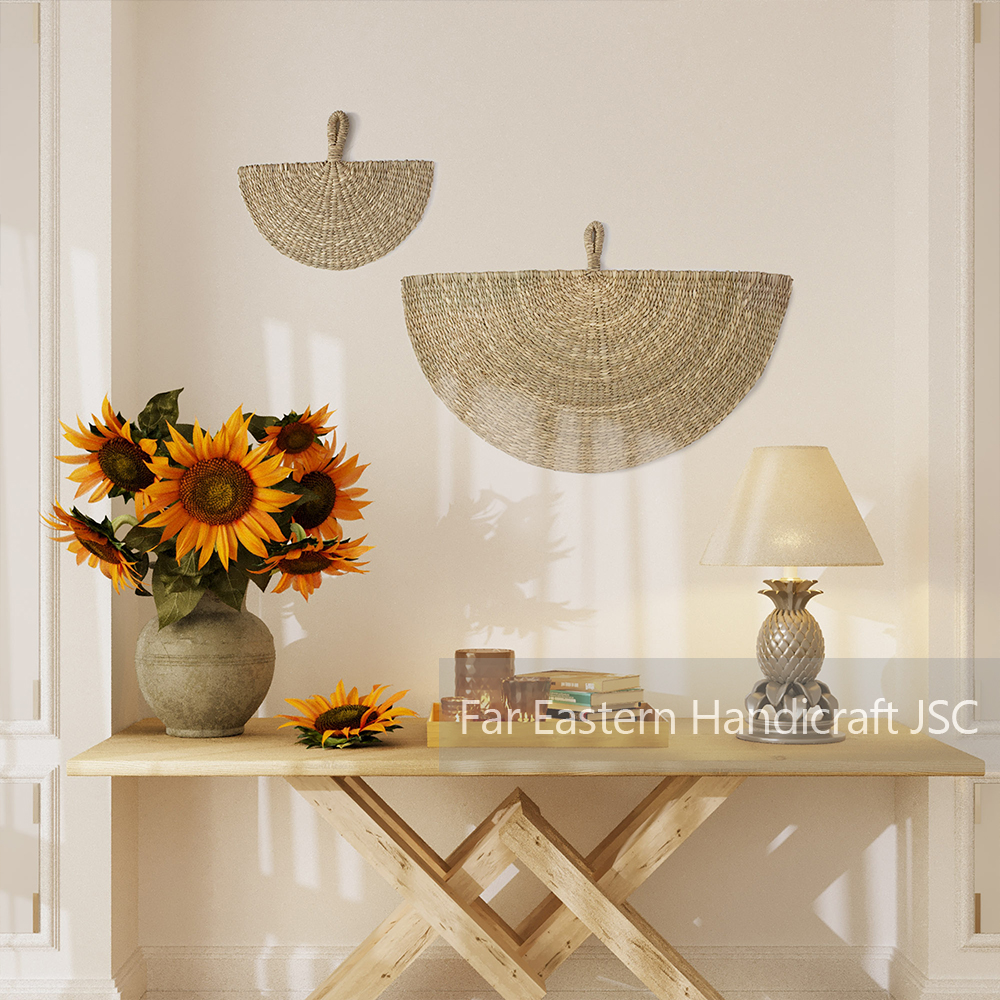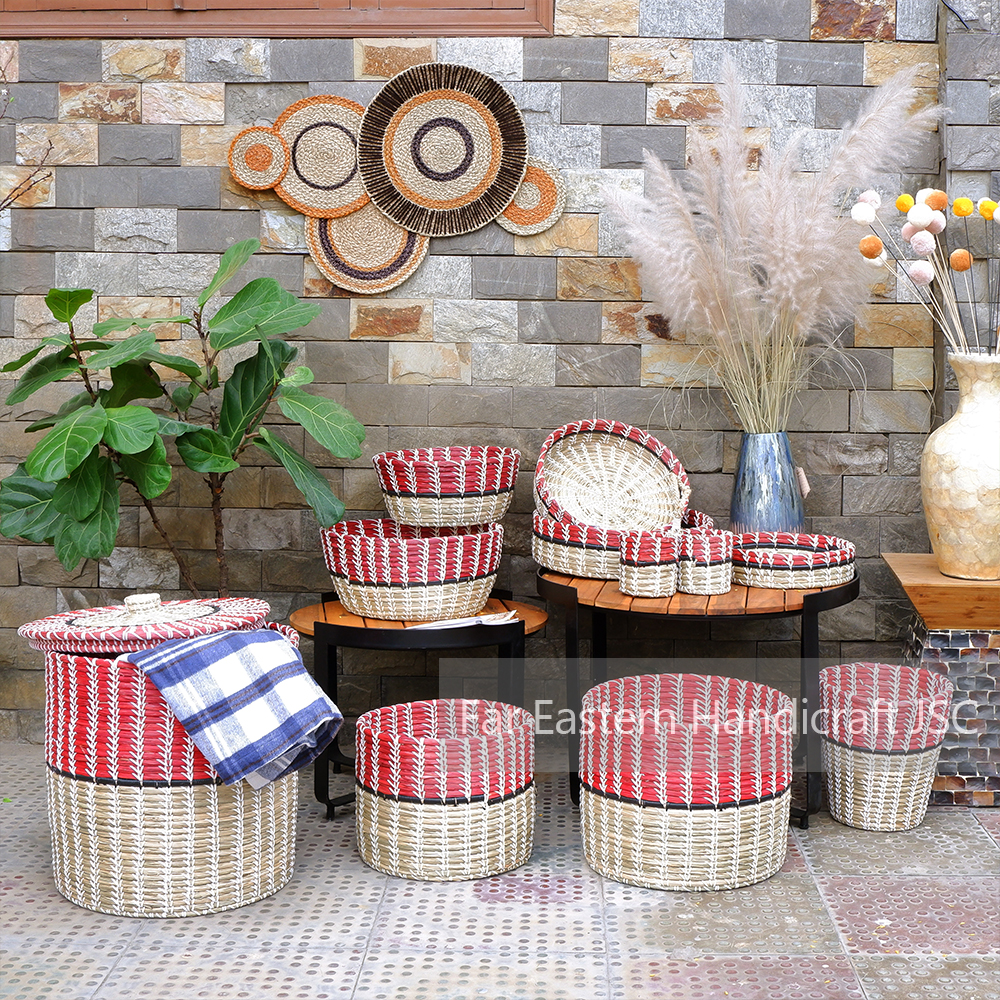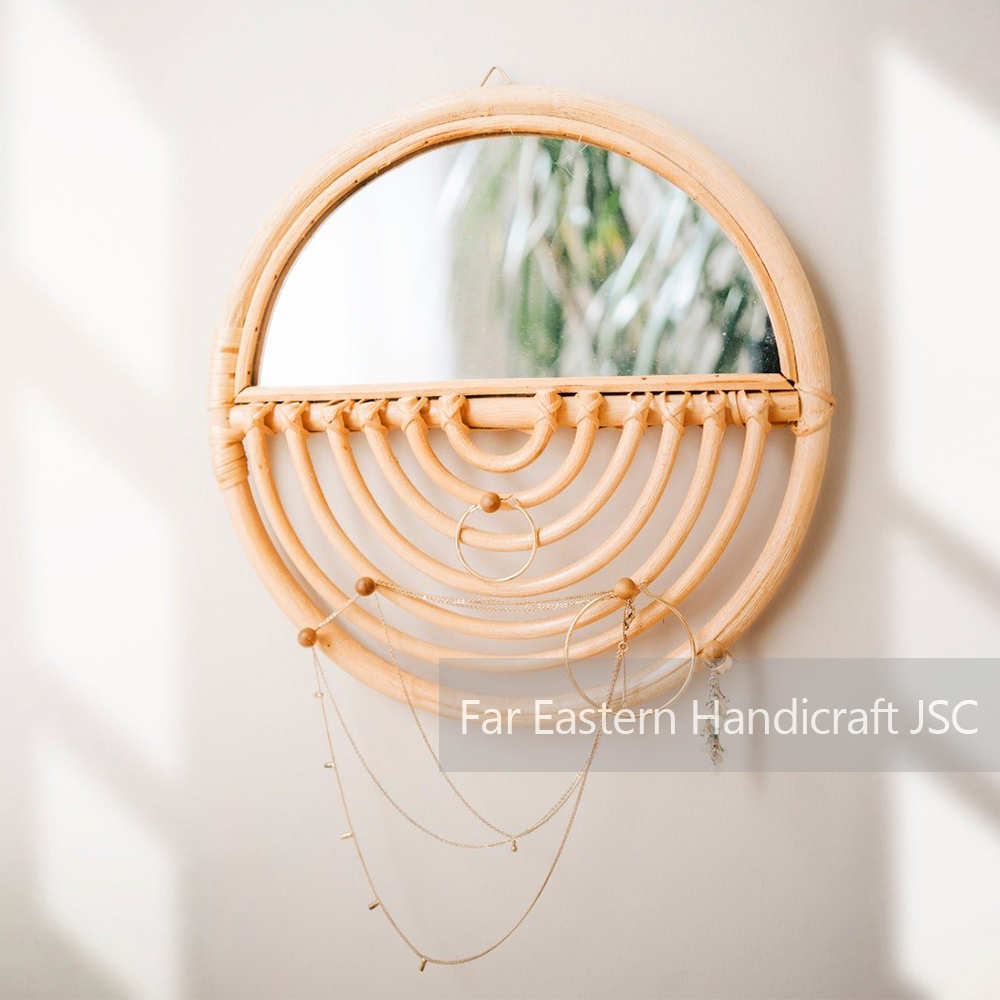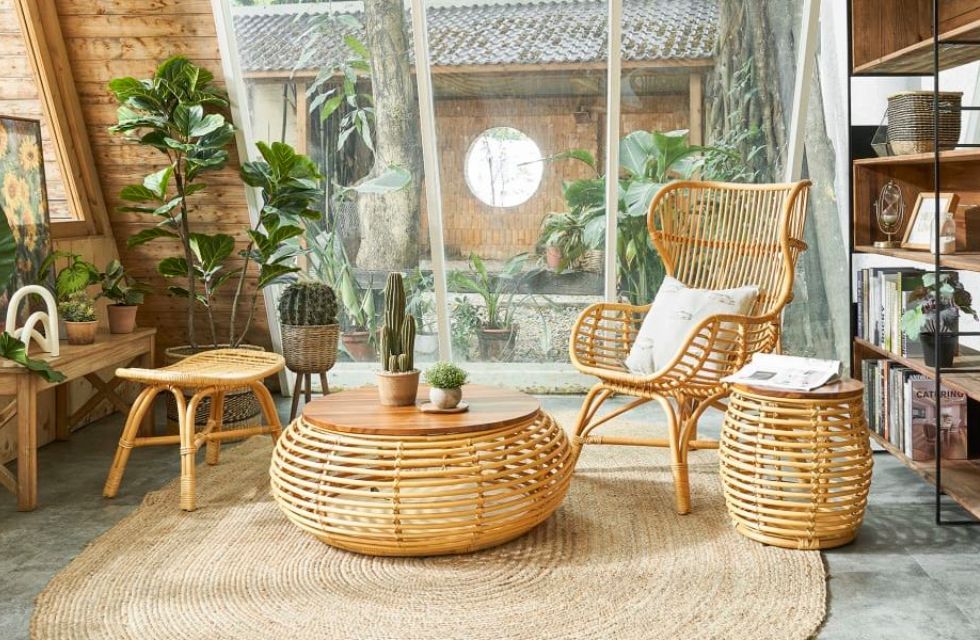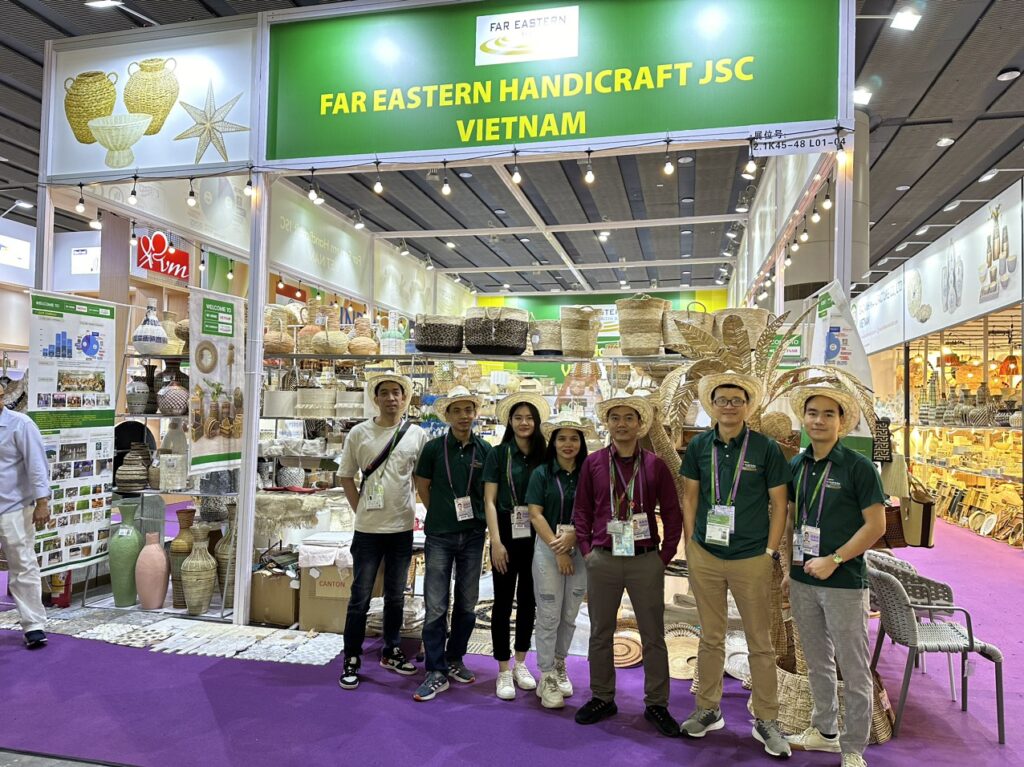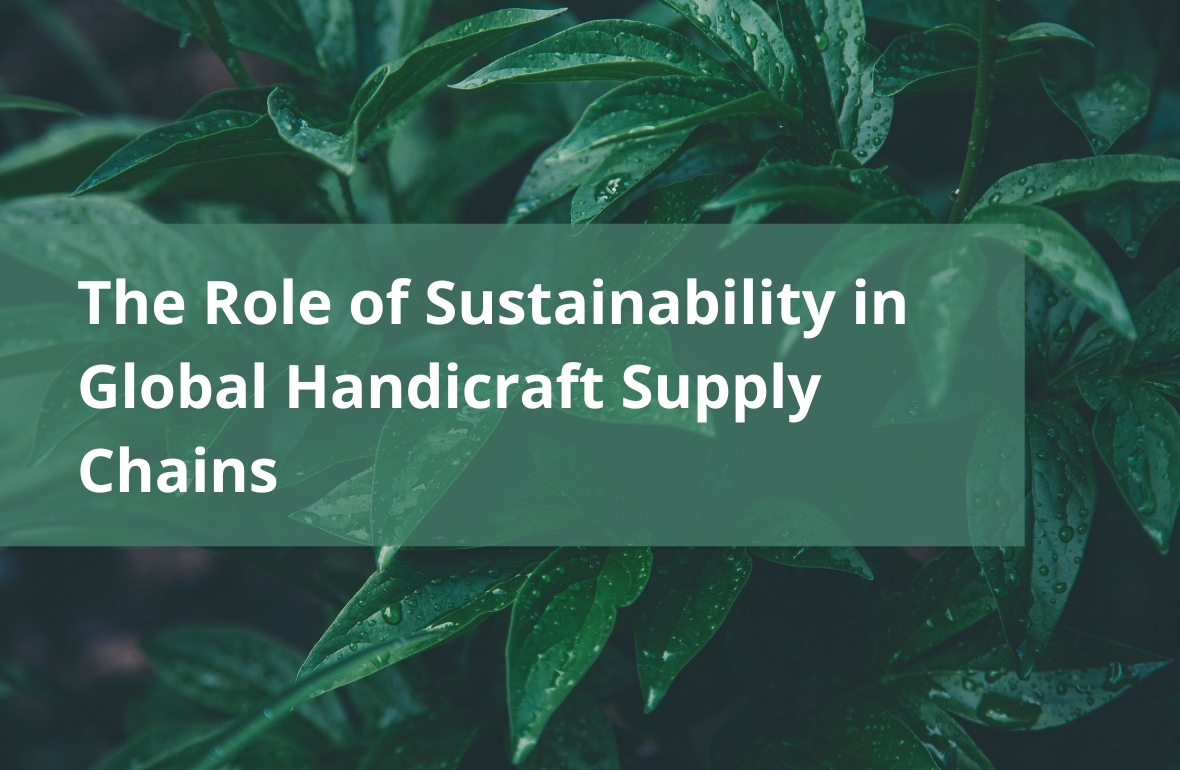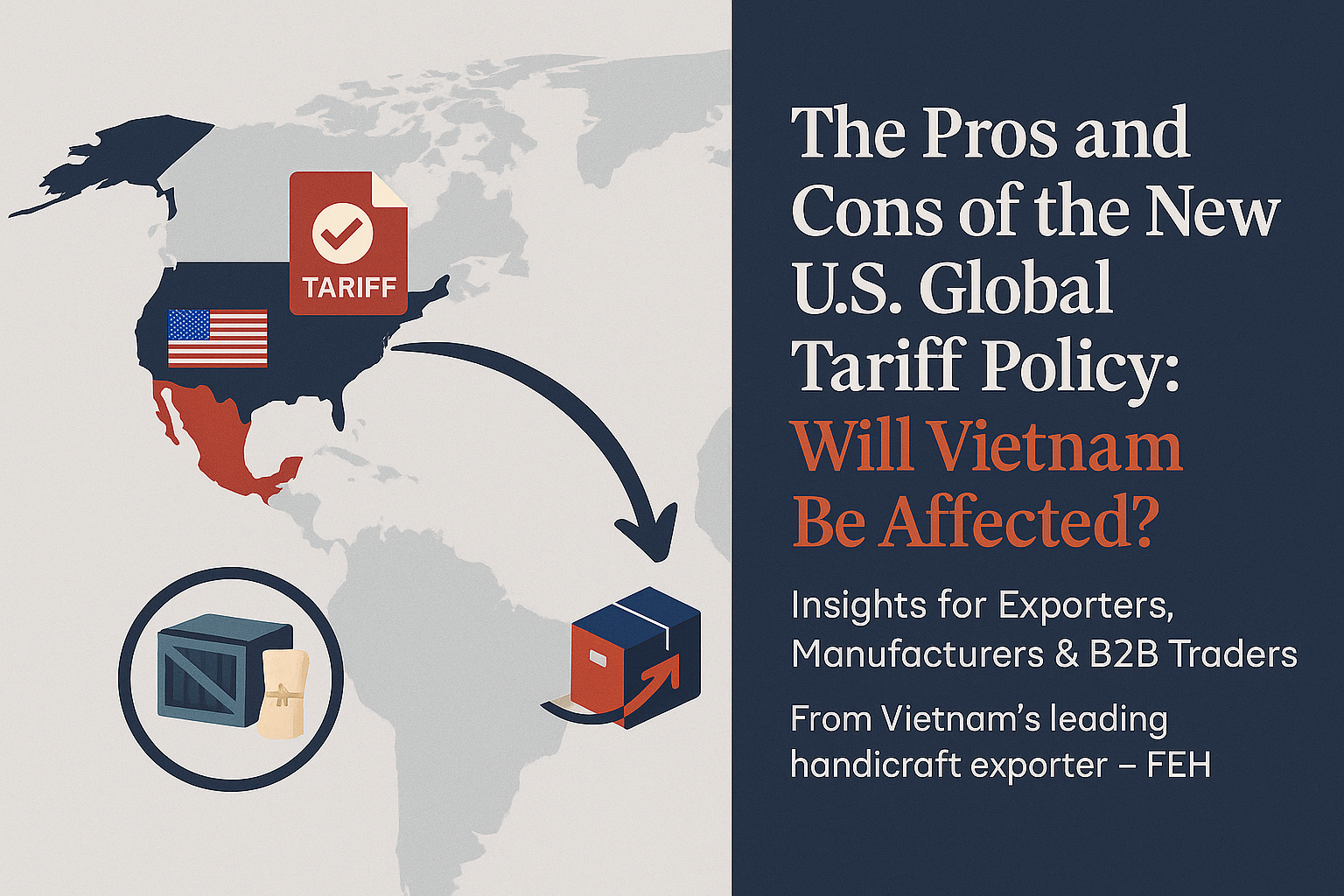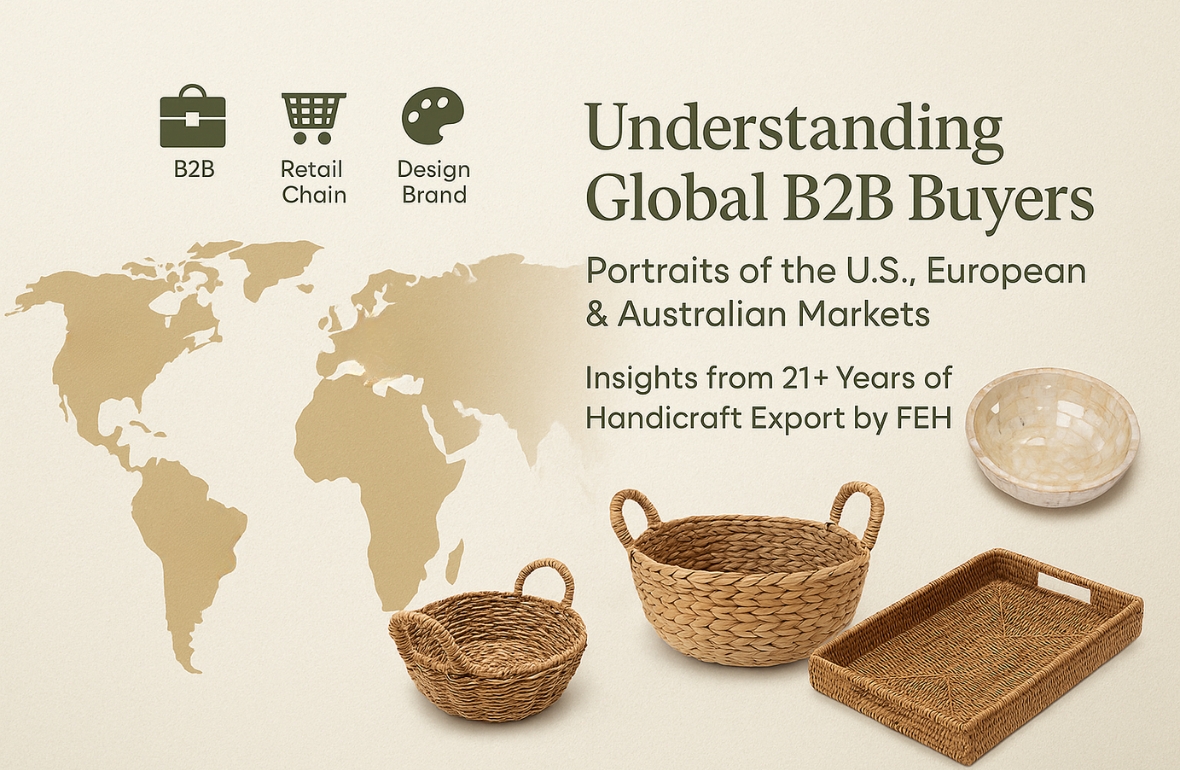Rattan vs. Seagrass: What’s the Difference?
Seagrass and rattan are two popular materials widely used in crafting furniture items like chairs, tables, baskets, and lamps. However, seagrass and rattan differ significantly in characteristics, applications, sustainability, and cost. This article will explore the key differences between seagrass and rattan.
Are Seagrass and Rattan the Same?
Seagrass and rattan are not the same. Seagrass is a type of grass that thrives in coastal or riverside areas with brackish water, while rattan is a climbing plant belonging to the subfamily Calamoideae, known for its dense, flexible, yet lightweight stem.
Although both seagrass and rattan are used in various industries, they possess distinct characteristics. These natural, flexible materials are commonly found in Vietnam and Southeast Asia. Both are eco-friendly and biodegradable, making them sustainable choices for the environment. In handicraft production, rattan and seagrass are classified as “wicker” materials, requiring drying before the weaving process can begin.
Let’s discuss the similarities between rattan and seagrass
Both rattan and seagrass exhibit good color fastness, allowing for dyeing, painting, and color-washing to create visually appealing decorative products. However, it’s important to note that exposure to humid environments may cause these items to fade over time. Proper care and preservation are essential for extending their lifespan.
With their earthy tones and woven textures, rattan and seagrass are widely used in Vietnam to create a variety of handcrafted products. These items effortlessly enhance any space, adding a touch of natural charm and aesthetic appeal.
Differences Between Seagrass and Rattan
While rattan and seagrass share some similarities as plant-based materials, there are notable differences that set them apart.
Natural Structure
Rattan consists of rigid canes that require processing to obtain intermediate products like rattan core and rattan peel, which are then used to create various home accents. In contrast, seagrass has thin, pliable stems that can be easily harvested and used directly for crafting.
Weaving Styles
Due to its supple nature, seagrass allows for a wide range of weaving styles and patterns. In some cases, seagrass products may need additional support from metal frames for added sturdiness. Rattan, being sturdier, offers fewer weaving options and often doesn’t require metal frames for support.
Seagrass products may need additional support from metal frames for added sturdiness
Hardness
Rattan is generally sturdier than seagrass, allowing for weaving without the need for iron frames. However, rattan can become brittle, especially when using split rattan core strands, and can break under strong force or prolonged exposure to the elements. Seagrass is also prone to bursting in high humidity conditions, which is why iron frames are commonly used to enhance the strength and shape of seagrass products.
Rattan mirror is generally sturdier than seagrass mirror, allowing for weaving without the need for iron frames
Resistance to Mold
Both seagrass and rattan are susceptible to mold growth in humid conditions, but seagrass is more prone to this issue, while rattan has a lower susceptibility.
Resistance to Pest Attacks
Rattan canes, due to their high starch content, are more vulnerable to pest and insect attacks compared to seagrass. Special treatments like oil-curing are often required to remove starch and protect rattan during processing. Seagrass, on the other hand, is generally resistant to insects.
Applications
Rattan is more commonly used in furniture production and outdoor homewares, such as tables, chairs, and doors. Rattan cores and peels are also used to create home accents like baskets, planters, and lampshades for indoor use. Seagrass, being softer, is less frequently used in furniture production but is popular for crafting home accents like baskets, indoor planters, trays, and lights.
Far Eastern Handicraft’s rattan furniture collection
What Are Seagrass and Rattan Used For?
Seagrass and rattan are versatile materials with a wide range of applications in interior design and crafts. Here’s a closer look at some common uses for these natural materials:
Seagrass and Rattan Furniture
Furniture made from seagrass and rattan fibers adds a natural and modern touch to any living space. These materials are skillfully woven into chairs, benches, sofas, beds, and bed frames, creating furniture that exudes natural beauty and charm. The intricate weaving of seagrass and rattan fibers into spider web-like structures results in pieces that not only look stunning but also make spaces feel more spacious and airy. This type of furniture is suitable for various interior styles, from classic to modern, and can be used in living rooms, bedrooms, or any other area of the home.
Handicrafts
Rattan and seagrass are widely used in the production of handicrafts, thanks to their natural and sustainable qualities. These materials allow artisans to create beautiful and functional pieces such as baskets, planters, handbags, and more. Handicrafts made from seagrass and rattan not only highlight the natural beauty of these materials but also support sustainability and local artisan communities. By incorporating these eco-friendly products into our homes, we can appreciate the craftsmanship and contribute to a greener, more socially responsible future.
Rattan serving tray – One of our best-selling item
Construction
Beyond their use in furniture and crafts, seagrass and rattan also have applications in the construction industry. Seagrass plays a vital role in coastal and marine construction projects, acting as a natural buffer against erosion by stabilizing sediments and reducing wave energy. Rattan, with its lightweight and flexible properties, can be used to create fences, trellises, garden arches, and other decorative elements. These structures not only provide support for climbing plants but also add a natural touch to gardens and outdoor spaces.
Conclusion
In summary, while both rattan and seagrass are exceptional natural materials, they differ significantly in origin, appearance, durability, and comfort. Rattan provides a sturdy, textured look with remarkable strength and versatility, while seagrass offers a softer, more refined aesthetic. When choosing between these two materials, consider your specific needs and preferences to ensure you select the right furniture or decorative items for your space.
Purchase products from the most reputable rattan manufacturer in Vietnam
Are you looking for reputable wholesale rattan supplies distributors or wholesale rattan supplies manufacturers with a variety of products and preferential discounts? Look no further; stop at Far Eastern Handicraft—one of the best rattan products wholesale suppliers in Vietnam.
Far Eastern Handicraft’s team at Canton Fair 4-2024
Reputable rattan products wholesaler with long-standing expertise
Far Eastern Handicraft, also known as FEH, has more than 19 years of experience in handicrafts and interior design. Since 2003, FEH has been the leading manufacturer of handcrafted home goods in Northern Vietnam. As a reputable home decor manufacturer—and rattan wholesale products supplier in particular—with the capacity to produce numerous rattan supplies in bulk orders and quality assurance in each shipment, FEH has been serving over 600 importers and wholesalers in the US, Europe, Australia, and the Middle East and exporting more than 2,000 containers annually.
A warehouse system with adequate production capacity that satisfies customer demands
The system of factories, workshops, and warehouses at FEH has a good production capacity and satisfies not only the requirements of the major testing certificates in the world but also those of each individual client.
Strict product quality control
Before delivering goods to customers, FEH always pays close attention to product quality inspection. Our quality control team pays close attention to every step of the manufacturing process for products (handmade wicker furniture in particular), starting with the preparation of the raw materials and continuing through the weaving process and product evaluation. In order to guarantee objectivity in the evaluation of product quality, we also have third-party inspection activities.
Internationally standardized rattan supplies supplier with certificates
The system of factories and warehouses operated by FEH has a high production capacity and is certified by ISO, C-TPAT, BSCI, FSC®-COC, and ICS.
Each line of furniture produced by Special Far Eastern Handicraft has its own unique certificate. No matter what kind of products you require, FEH ensures they are approved and suitable for the customer.
An experienced R&D team
With many years of experience in the field, FEH has a strong R&D team. Our R&D team has ample experience in home goods market research, especially in rattan supplies bulk. Our team is constantly developing new models to keep up with market trends and consumers’ tastes.
The R&D team is always ready to help customers design and modify products in accordance with their requests.
Great prices: cheap rattan supplies wholesale
As a business with a vast network of connections in the furniture industry in particular and the home decor industry in general, we constantly work to provide our rattan supplies distributors, rattan wholesale suppliers, and rattan product customers with the best prices on the market to maximize profit for the companies that work with us.
Whether you belong to a rattan supplies vendor or a rattan product retailer, you just need to pick the
model or tell us what you have in mind and let us take care of the rest, from developing the sample to mass production and shipping the final products to your destination. Far Eastern Handicraft is one of the best rattan manufacturers in Vietnam.
Whether you belong to a rattan supplies vendor or a rattan product retailer, you just need to pick the model or tell us what you have in mind and let us take care of the rest, from developing the sample to mass production and shipping the final products to your destination. Far Eastern Handicraft is one of the best rattan manufacturers in Vietnam.
Final Thoughts
Rattan furniture is environmentally friendly and offers a comfortable sitting experience, making it a popular choice for both interior and exterior decor. However, it does come with a few disadvantages, particularly when used outdoors. Proper maintenance is essential to ensure its longevity.
We hope the information provided in this article about the disadvantages of rattan furniture helps you gain a better understanding of this product type!
Check out more of our products HERE.
Or CONTACT US NOW for more information.
| More from Fehandicraft’s blog
>> The Difference Between Wicker and Rattan: Find Out Now! >> What Materials Are Used to Make Rattan? >> How to make rattan furniture at Far Eastern Handicraft JSC |

